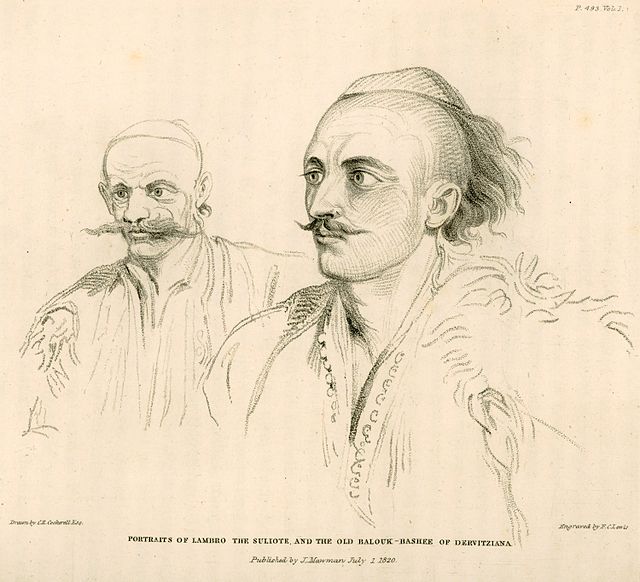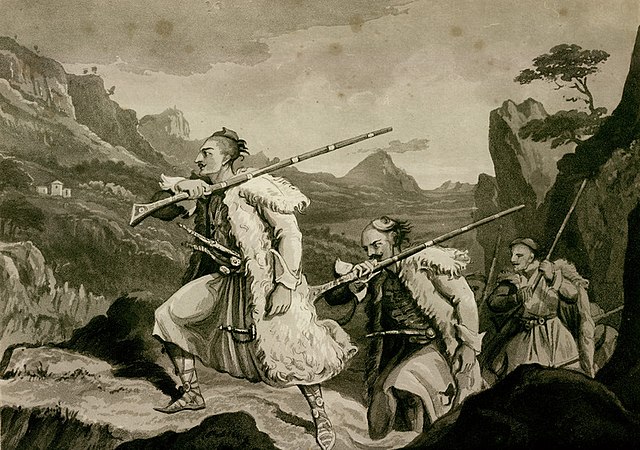The Souliotes were an Orthodox Christian Albanian tribal community in the area of Souli in Epirus from the 16th century to the beginning of the 19th century, who via their participation in the Greek War of Independence came to identify with the Greek nation.
Souliot warriors in a watercolour by Charles Robert Cockerell entitled Albanian palikars in pursuit of an enemy (1813-4)
A painting of Souli.
Vasilis Goudas, deputy to Markos Botsaris, by Louis Dupré
Captain of Suliote Albanians by Joseph Cartwright, published in March 1822.
The Albanian tribes form a historical mode of social organization (farefisní) in Albania and the southwestern Balkans characterized by a common culture, often common patrilineal kinship ties and shared social ties. The fis stands at the center of Albanian organization based on kinship relations, a concept that can be found among southern Albanians also with the term farë.
Portraits of Lambro the Suliote, and the old Balouk-Bashee of Dervitziana by Charles Robert Cockerell, published in 1820.
View of Albanian Palikars in Pursuit of an Enemy by Charles Robert Cockerell, published in 1820.
Shkreli tribesmen. Photo taken by William Le Queux before 1906.
A fortified tower (kullë) in Theth used as a safe haven for men involved in blood feuds.








